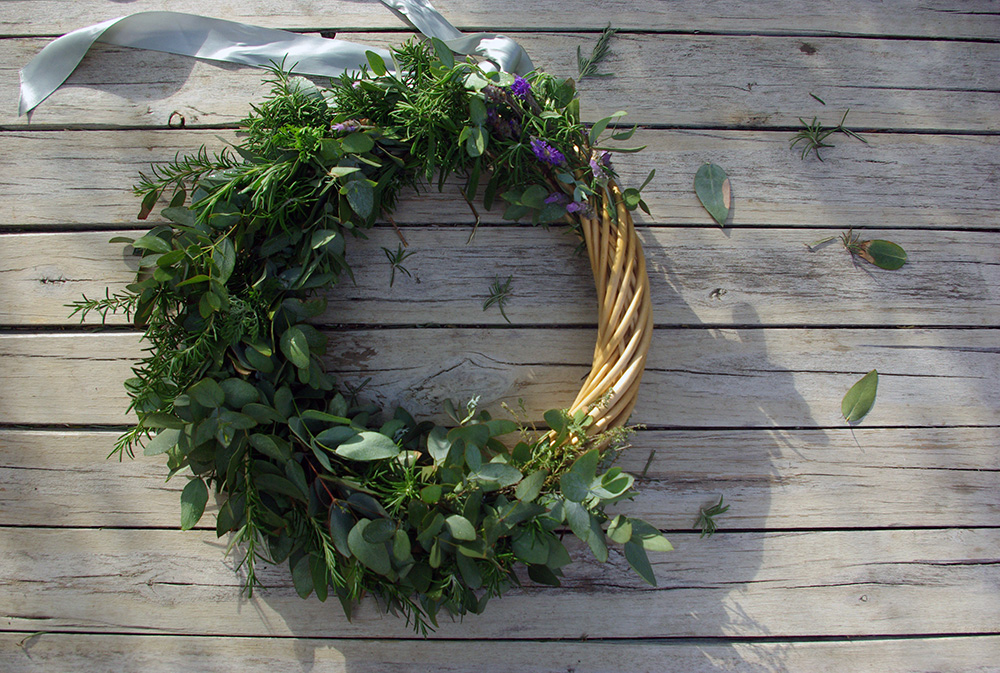
12 Nov Herb wreaths: the festive equivalent of a zen garden and why you should make one this season
Clipping fresh sprigs of rosemary from the garden hedge, the knots inside begin to unravel. Large ceramic dishes of garlicky roast potatoes and garnishings of fresh rosemary served up in a few weeks’ time wash into view, as I snip at the woody brush below. A few paces along, the palms of my hand brush over the soft tops of budding lavender. My garden is home to three different varietals, the Australian one grows profusely and smells rather lemonier. I prefer the French Lavender for what lies ahead. The bees seem to agree. Such a soothing scent, it usually fills me with the nostalgia of morning rusks and Earl Grey tea, but at this time of year, it’s the honey-lavender roasted carrots that conjure happiness within.
I’m gathering herbs for my annual herb wreath. It’s a recently acquired, much-loved festive season tradition. But there’s far more to it than the tactile garden therapies offered up through the tending and weaving of aromatic fronds. I’ve come to see these patient foliage creations much like the festive season equivalent of a Japanese Zen garden. Here’s why I think it’s worth beginning your season with the making of your own herb wreath.
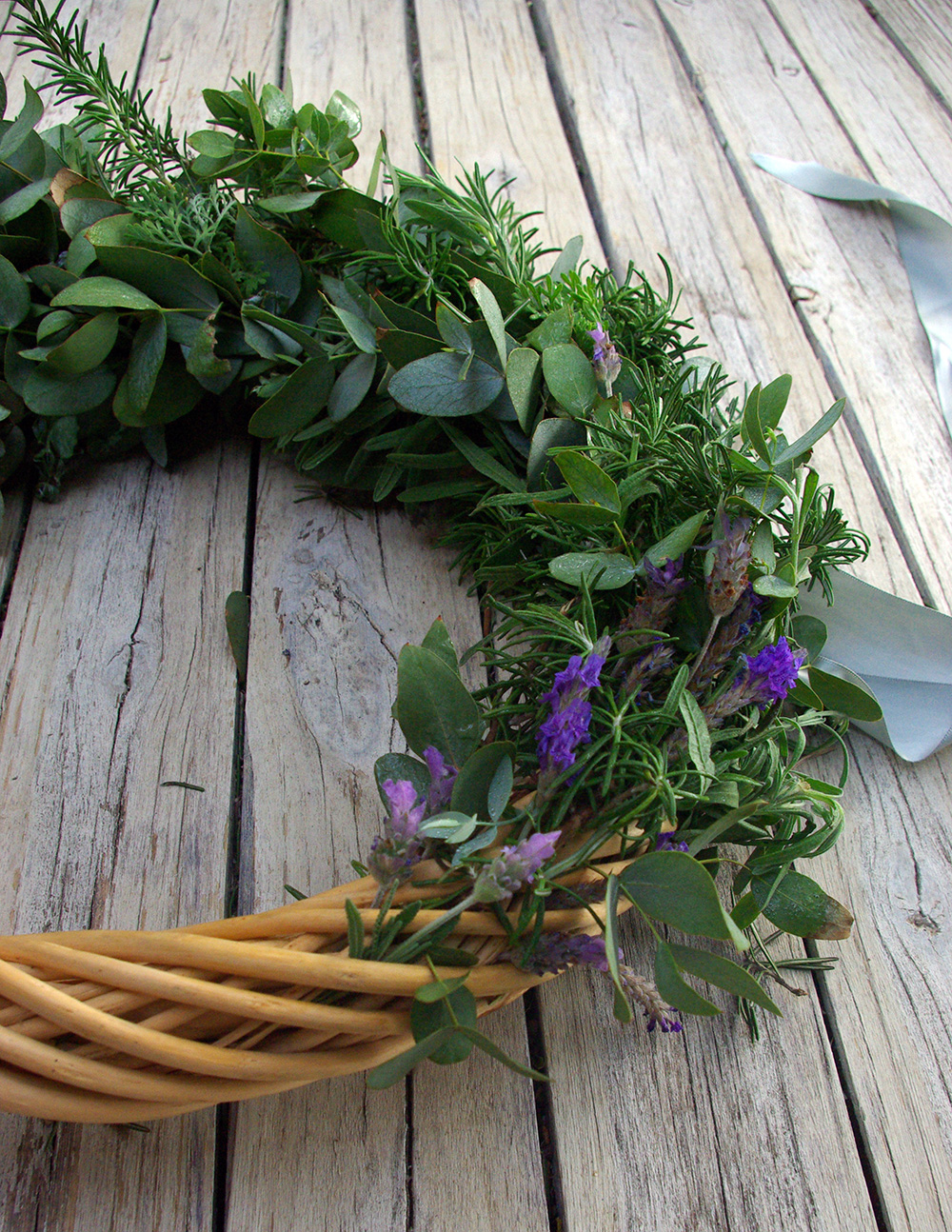
Setting anti-stress intentions
If 6 years in e-commerce has taught me anything, it’s that the festive season is a highly stressful period for folk on both ends of the spectrum – consumers and retailers alike. There never seem to be sufficient hours in the day for everything that needs doing (and here I come along and I’m about to tell you to make time for a few more hours of crafting). While it may seem counter-intuitive, setting aside a Saturday morning as the festive season ramps up a gear to weave together the fronds of a herb wreath can actually shift the way you experience your festive season.
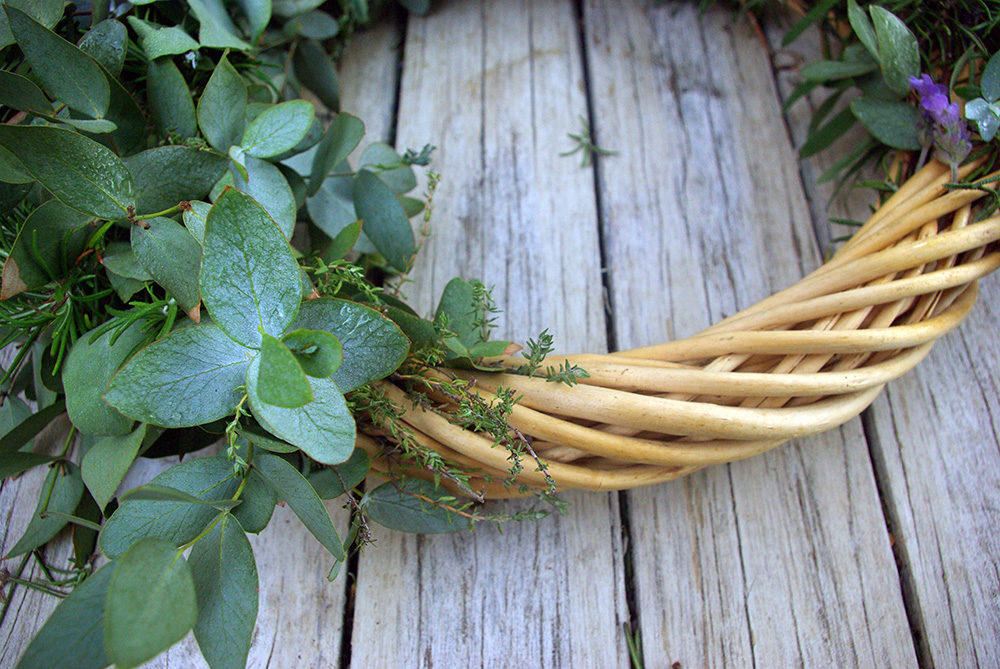
It comes back to mindfulness tasks. We all know by now that meditation reduces stress and anxiety, enhances our focus, fosters compassion and increases creativity. Mindfulness tasks aren’t so different. Whether it’s the raking of leaves, the repeated up down sanding of a wooden table, or the threading of fine-scented branches into a bamboo structure, the mind is only partially occupied and given free rein to roam. Often during such activities, thoughts arise from things that still need doing, problems that need solving.
By acknowledging them and then allowing them to drift off again as you decide where best to place your sprig of thyme, you’re choosing to give yourself to the moment. Use the two hours in which you’re weaving your wreath to set your intention for the next few weeks ahead. You do get to decide how you want the next few weeks to play out. All at once as a blur of overwhelming boxes to tick and things to complete or moment by moment? By the time your wreath is finished, you’ll have a hanging manifestation to remind yourself of your festive season intentions whenever you feel swept up in chaos.
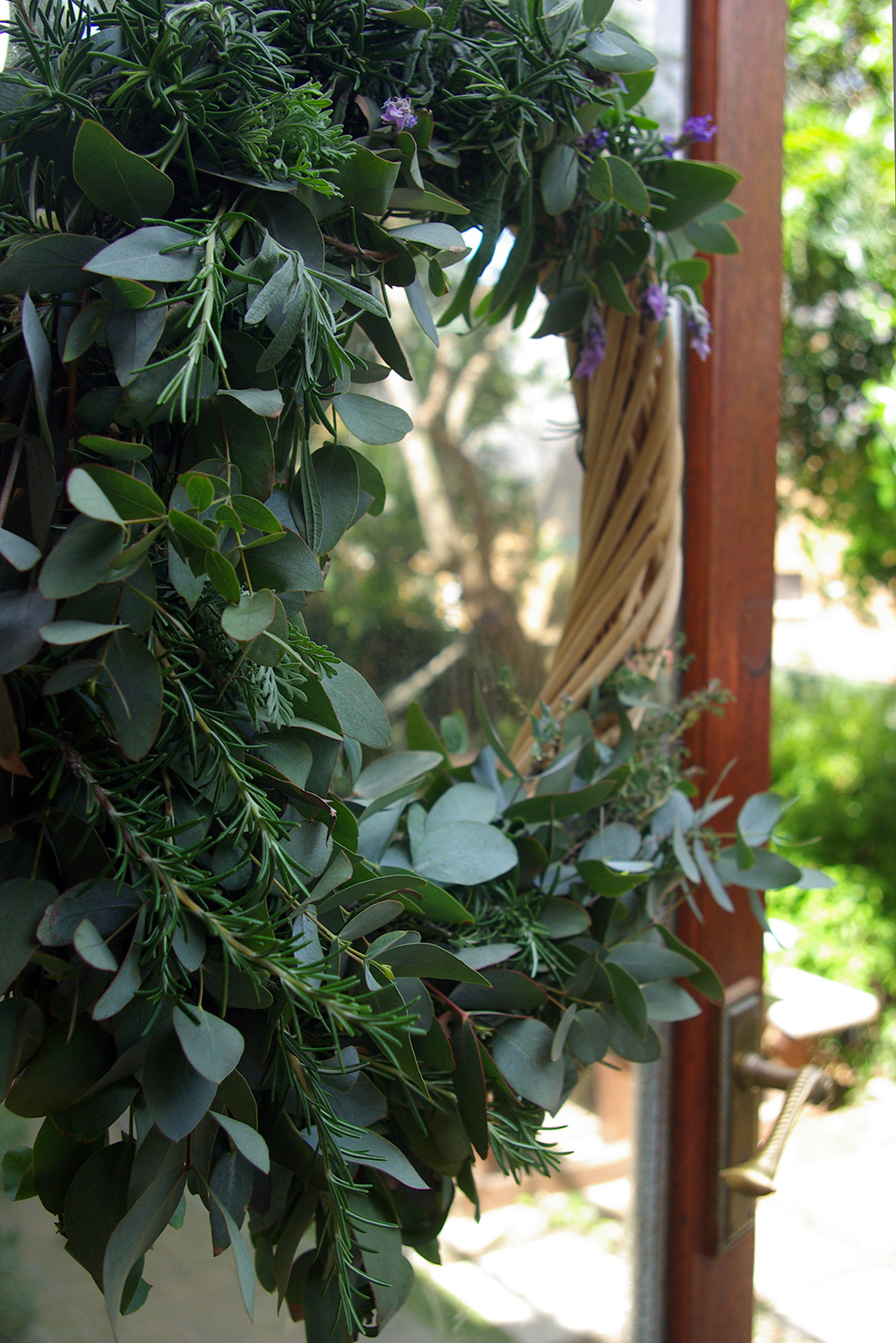
Accept imperfection
Part of the end of year stress is almost certainly due to the pressure of ideal gift shopping, acquiring meal-making mastery, the pressure to compete with your competitor or neighbour’s offering and inspire the perfect Instagram-worthy home and celebration. Making a herb wreath can help accept and even enjoy imperfection.
You might be thinking, ‘but I’m not creative’ and you would for that very reason prefer to buy a wreath, right? Consider if the reason you want to buy a wreath is that the bought wreath will be perfect isn’t precisely as a result of the stressful pressure of needing Instagram worthy lives. It doesn’t matter whether you’re creative or not. The very act of sitting down and making something out of an assortment of other things means you are creating something, you are being creative.
Your wreath might not be symmetrical. You may be too heavy handed and bruise the delicate stems while you weave them together. It might even all fall apart when you pick it up. You will still have spent the better part of two hours inhaling wonderfully aromatic greenery. And whatever the end result – it will be a product of you, something that came through you and now lives tangibly in the real world. My own wreaths are often lopsided semi-rounded shapes as I try to coerce the plants into symmetry. But that is not their will – it is mine. At some point, something in my mind always shifts, and I begin to enjoy the charm of the bits that shoot off with their own conviction.
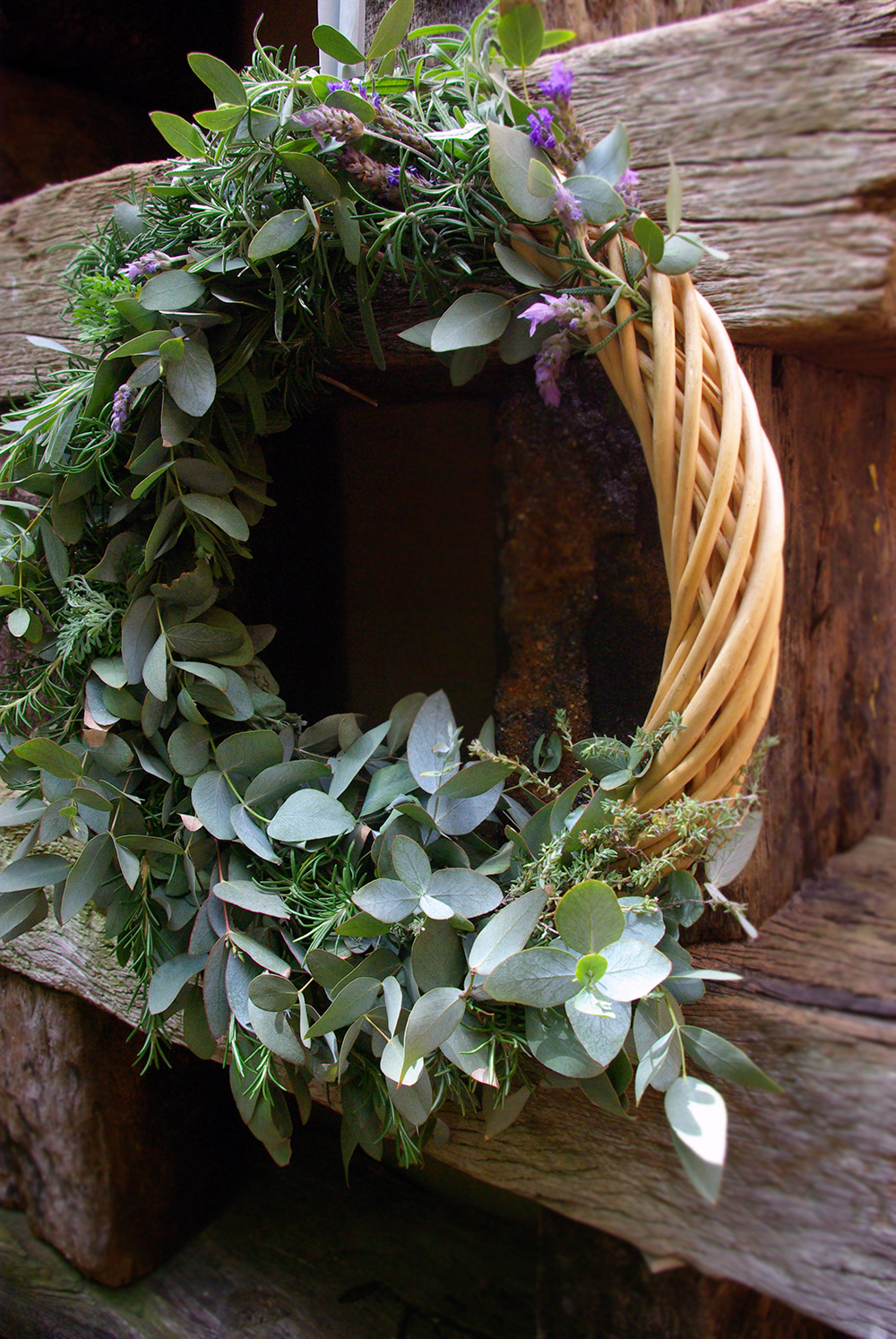
The Japanese are famous for creating the ‘enso’ or ‘zen circle’. It is an incomplete or imperfectly painted circle that symbolizes the imperfection of life. The charm lies in seeing the making of a wreath as an opportunity to develop your own understanding of a sense of beauty. This concept is referred to as ‘yugen’ which translated means ‘subtle grace’ or even ‘mysterious profundity’. By tending to your imperfect circle, your maybe not so round wreath, and accepting it for beautiful as it is, you will find that no matter the outcome, it will fill you with a sense of joy.
Perhaps this mindset can be carried into other festive season projects too. Just learning to let things exist as they are and letting go of all our preconceived perfectly circular notions already alleviates so much tension.
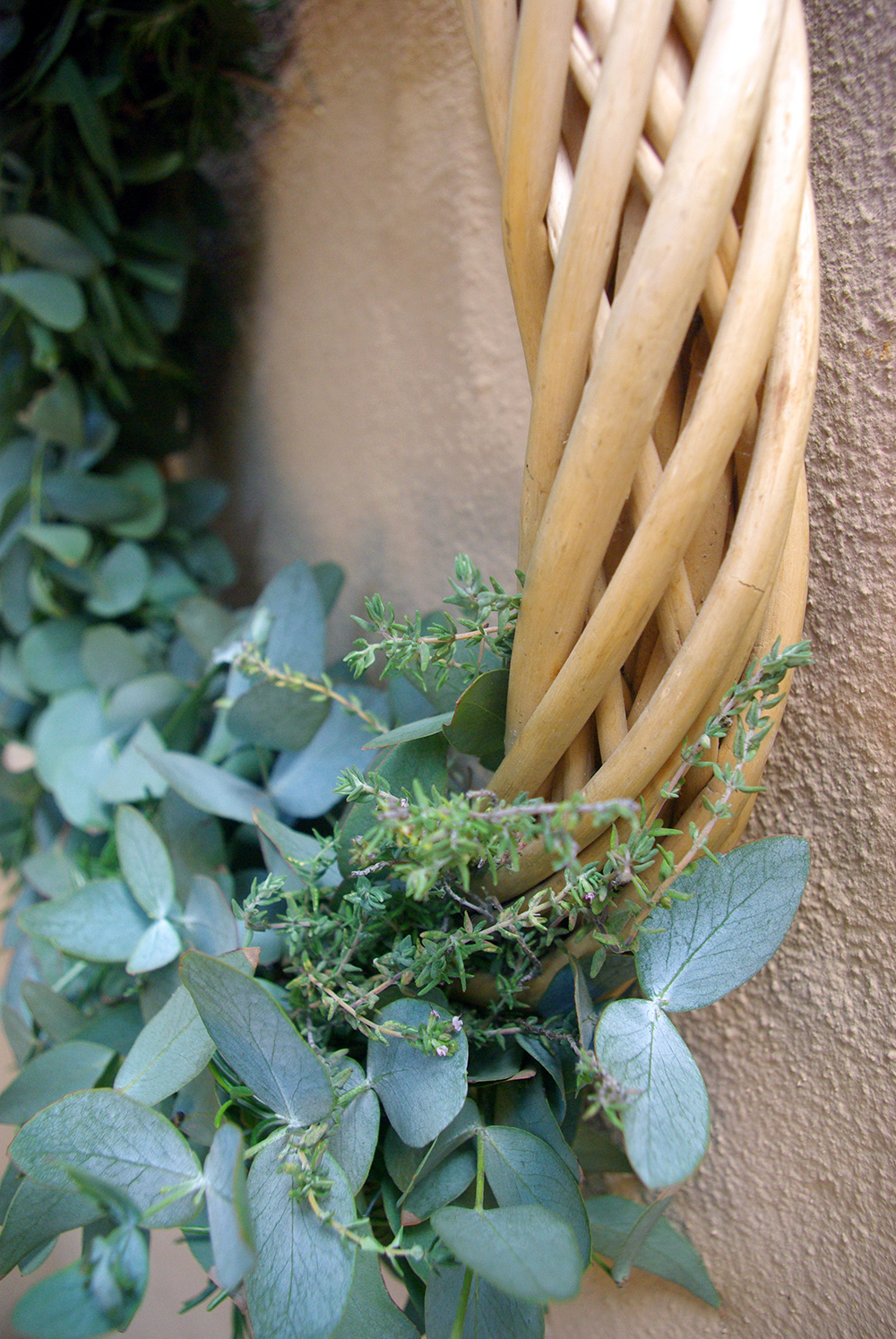
Embrace Transience
Unlike a plastic wreath, a herb wreath will only last a few days, a week if you’re lucky. But this makes it all the more special. For each of your wreath’s living hours, you will admire it, inhale its wistful aromas and cherish the beauty it brings to your living space. Things that are transient, like the shifting patterns in a zen garden or even the fleeting cherry blossom seasons in Japan, are all the more beautiful because they are so brief. They call us to stop with all the hustle and be present in their company, acknowledging them now because soon they will be gone.
My wreath often reminds me, when I’m caught up in a moment of anxiety or tangled up in the pressure of deadlines, that these moments will pass, this season will come to an end and before we know it, we’ll all be asking ourselves where the year has gone.
In those tangled moments, I get up, rub my thumb and forefinger on the resin-y leaves of rosemary, lavender or penny gum, draw a deep inhale and remind myself that this intensity won’t last forever. Everything in life is transient. By accepting even the stressful times as such, their grip on us softens and we can move through them, appreciating the intensity of its own type of energy with something to offer.
In a few weeks, your wreath will have wilted, the hectic days and nights will ease and you’ll be waiting for friends to arrive with whom to share the rosemary roasted potatoes and lavender infused honey glazed carrots.
It is my hope that you arrive there with a peaceful mind thanks to the patient lessons rustling in the sprigs of your very own Zen Herb Wreath.
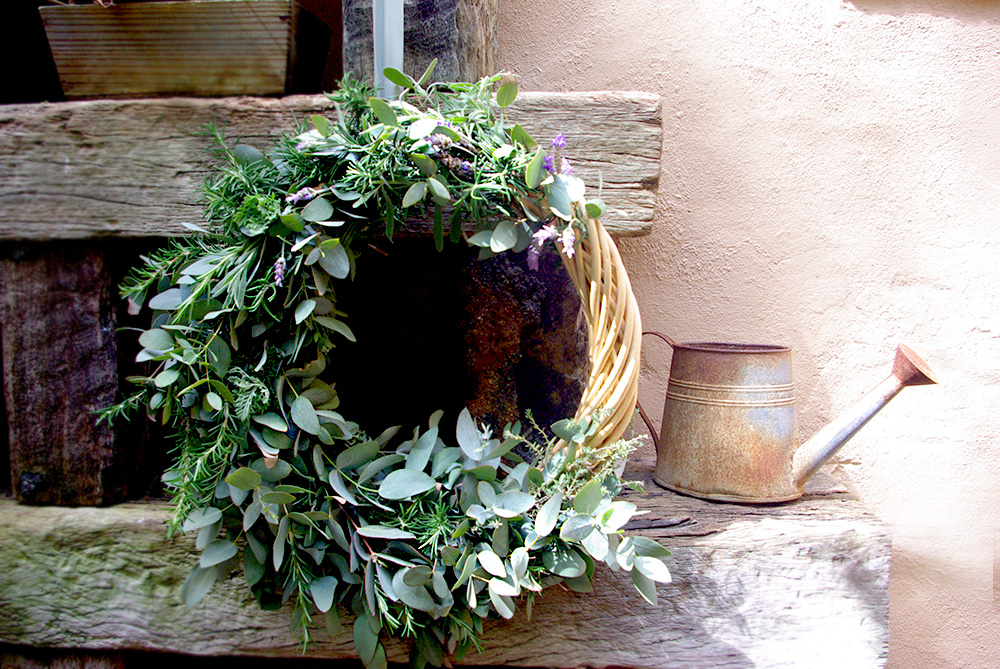
A few herb wreath making tips
Layer up – Build the base with your sturdiest herbs like rosemary and then weave in the more delicate fronds like lavender and thyme towards the end so they don’t get lost in the bigger leaves
Choice sprigs – Rosemary, lavender and thyme all work fairly well, as they’re slightly hardier plants and don’t wilt as quickly as basil or mint for example. Although penny gum isn’t a herb it makes a wonderful base plant, lasts fairly long and is pleasantly aromatic too.
Other plants that work nicely are olive or wild olive branches and bay leaves.
Get wired – In the age of wireless, the wire is your friend when it comes to assembling physical things. A nimble, thin wire is easily hidden amid foliage and can help you secure your branches in place. A pair of little pliers is also very helpful.
Out and about – If you can, work outdoors somewhere. The plants ‘shed’ a fair bit and the mess this makes won’t need to be cleaned up outside.
Here’s to finding beauty in wonderfully scented asymmetry. Do you make herb wreaths? I’d love to hear your tales.



Fionna
Posted at 22:49h, 14 NovemberBeautiful metaphors and photography!
Pingback:Herb wreaths: the festive equivalent of a zen garden and why you should make one this season | Andrea Fedder
Posted at 10:30h, 05 April[…] Continue reading on the Faithful to Nature blog. […]
Kelly Jennifer van Niekerk
Posted at 09:35h, 18 DecemberHey there 🙂 Where did you get your (Cane?) wreath base? Great article 🙂